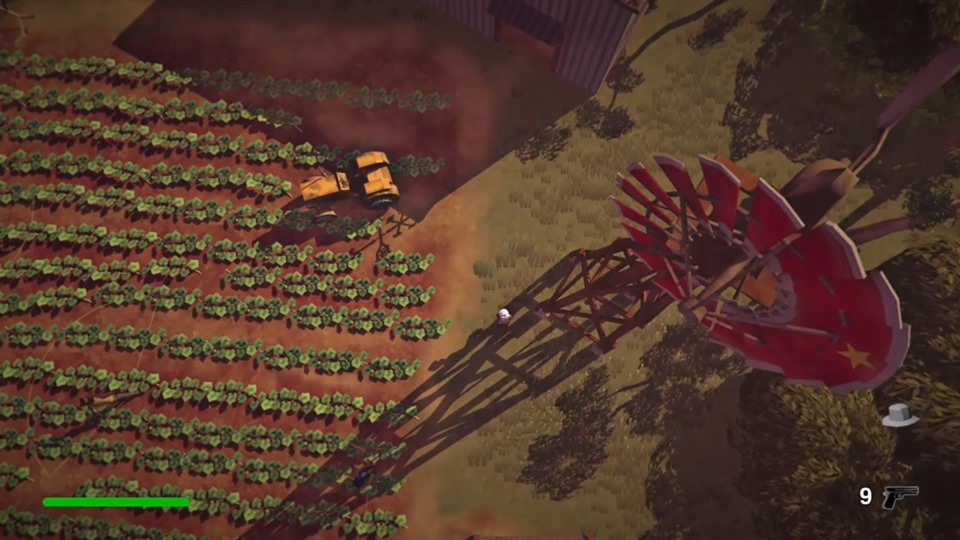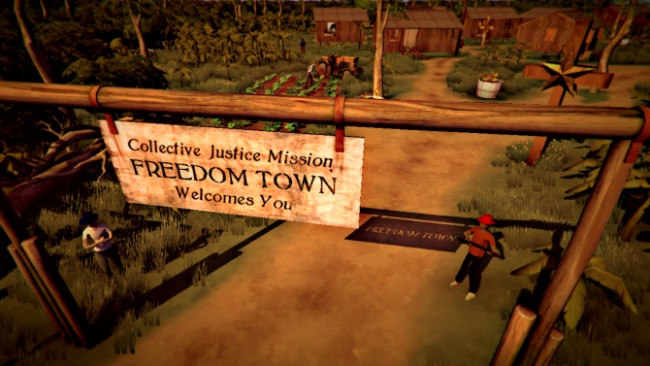When ex-cult members describe the process of leaving dangerous religion behind, they often say they “got out.” The Church in the Darkness makes this literal.
But in this top-down stealth game, the hard part is breaking in.
A Very Particular Set of Skills
You play as Vic, the aunt or uncle of Alex, a young member of the Collective Justice Mission, an Oakland-based socialist Christian sect that decamps to Battuela, a fictional South American country. The group is led by Isaac and Rebecca Walker, a pair of charismatic preachers who amassed a following 500 strong in the states before founding their own commune, Freedom Town, in the jungle. As the story begins, communication between the Mission and members’ American families has become increasingly rare. At the urging of Alex’s mother, Vic—who is implied to have a very particular set of skills from a past career in the military or intelligence—sets out to infiltrate Freedom Town and get Alex out.
If that set-up sounds familiar, it’s because developer Richard Rouse III has modeled the Collective Justice Mission on the Peoples [sic] Temple Agricultural Project, a Marxist Christian group that migrated from San Francisco to Guyana, a small South American country in the mid 1970s. The settlement that the Peoples Temple founded was named after their leader, Jim Jones. Jonestown lives in infamy. Nearly 1000 people died there in a mass (often coerced) suicide by drinking grape Flavor-Aid poisoned with cyanide.
That tragic event introduced another phrase to the cult membership lexicon: “drinking the Kool-Aid.” The phrase denotes an adherent who is fully, sometimes dangerously, sold on the ideology their leaders are espousing. And, depending on the instance of The Church in the Darkness you spawn into, the nephew that Vic comes to rescue can be at various points on the Kool-Aid drinking spectrum. The guards whose expansive vision cones you’ll need to sneak past to reach him? They’re all sold enough on the Collective Justice Mission that they’ll shoot you on sight.
Story and Stealth in The Church in the Darkness
This stealth game often feels like it’s tasking you with attempting to color within constantly moving lines. It isn’t especially fun at the beginning. Even on the easiest difficulty setting, bullets chew through your health bar and guards are plentiful and attentive. The perspective, which is so far removed that Vic and the guards look like ants, takes some getting used to. This is, essentially, a narrative-driven roguelike (with a set map) and early runs run headlong into a concrete wall. You will feel like a crash test dummy, repeatedly splatting against overbearing AI.
But, it only takes an hour or two to get into the groove. Vic can sprint forever and escaping guards is often as simple as running two huts over and out of sight. As the difficulty recedes, the story comes more clearly into focus. As you explore Battuela, you’ll seek out members of the settlement who are beginning to doubt Freedom Town’s mission. Interactions with these characters help to reveal the depths of The Church in the Darkness’s potential for narrative branching.
The moment you meet one of these characters, prompts appear to inform you that, as with any character in the game, you can subdue or kill them. Additionally, their reactions to you depend on your actions. In a peaceful playthrough, my acquiescence to one of these doubters’ request that I hand over my guns helped me earn his trust; in a violent playthrough, it prompted him to turn his guns on me (and I now had no way to defend myself). You can kill any character in the game (including Alex) and the narrative adapts to work with your choices. There are over a dozen different endings to account for this impressive freedom of choice.
Variable Variables
That said, the game’s structured story is sometimes at odds with its roguelike gameplay. The presence of constantly repeating story beats means that starting over doesn’t feel like an opportunity to try new things; it feels like starting a new save file. While Hades, Supergiant’s take on the narrative-driven roguelike, contextualizes the endlessly repeating loop within its story—i.e. you are Hades’ son, attempting and failing to escape the underworld—The Church in the Darkness is aiming to tell one continuous story. Death means the end of that story, not another chapter, and that can prompt feelings of frustration and hopelessness rather than excitement to try again.
Additionally, the game pointedly tells you that the preachers’ personalities are subject to change from run to run. But, it isn’t entirely clear what exactly changes. Sometimes, when Isaac confronted me in my cage, he asked that I leave his people alone, then left. Other times, he shot me dead. It was difficult to parse if these interactions were being determined by his personality or by my level of violence. I still don’t know. In a roguelike—a genre that teaches mastery through repeated failure—not knowing why you failed is a problem.
That said, The Church in the Darkness is a smart stealth game that impressively warps to reflect your actions. It lets you get in and break out as you see fit. While failure still feels like failure, success is sweet and varied. Once it gets a hold of you, you may not want to break out, at all.
The Church in the Darkness review code provided by publisher. Reviewed on PS4. For more information on scoring, please read our Review Policy.
-
Impressively reactive narrative
-
Many endings
-
Intriguing story
-
Failures feel frustratingly final
-
Removed perspective occasionally makes the game harder
-
Unclear variables
The Church in the Darkness Review
-
The Church in the Darkness 1
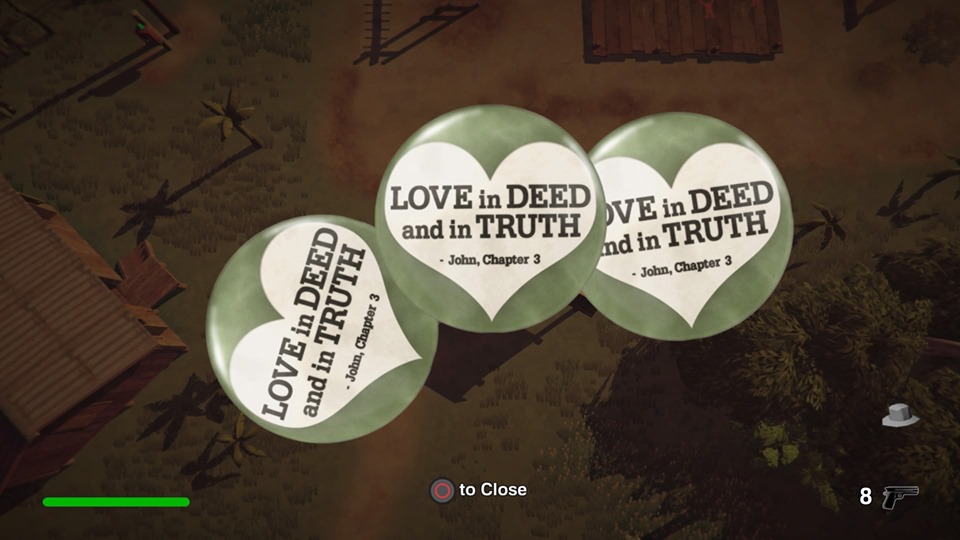
The Church in the Darkness' collectibles are appropriately '70s-ish kitsch.
-
The Church in the Darkness 2
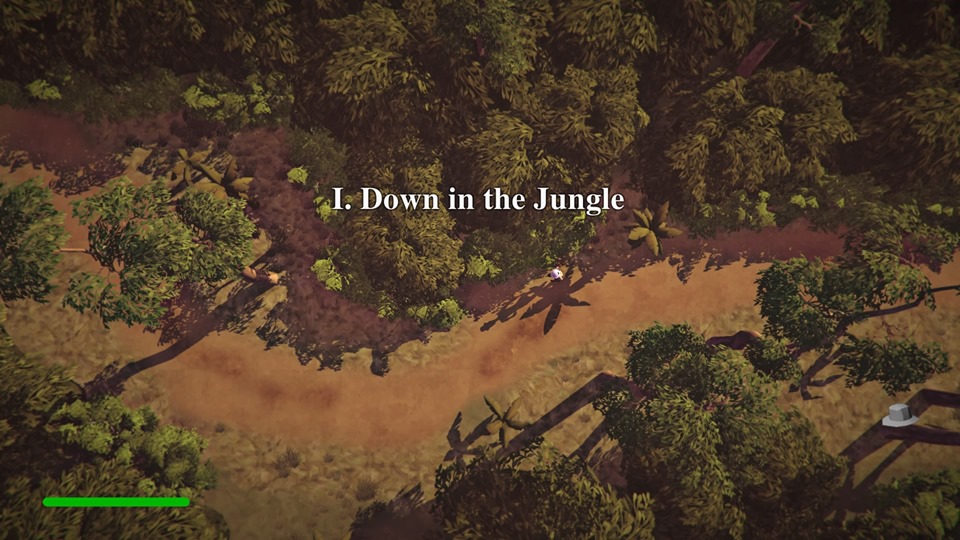
Vic begins his infiltration in the jungle outside the settlement (though their insertion point changes from run to run).
-
The Church in the Darkness 3
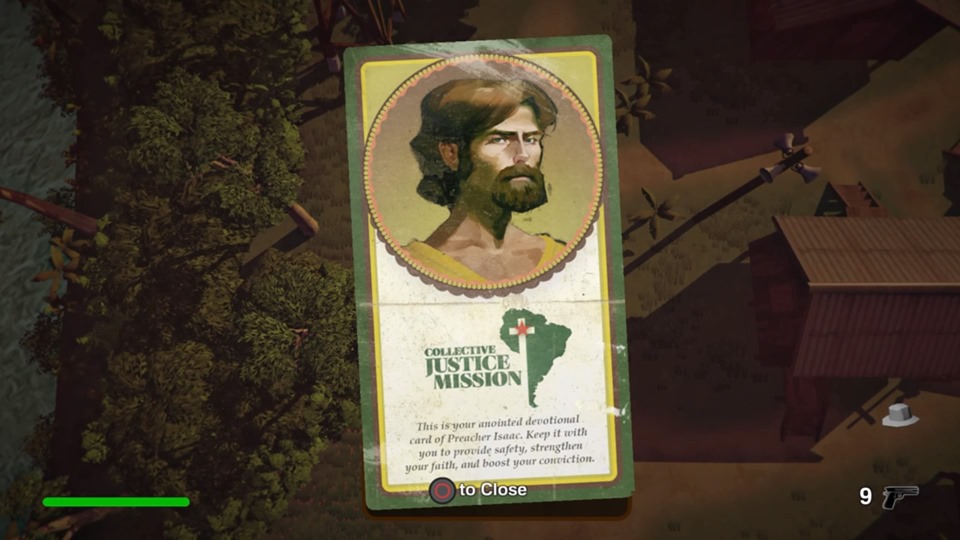
In The Church in the Darkness, the Collective Justice Mission is led by Isaac Walker (pictured) and his wife, Rebecca.
-
The Church in the Darkness 4

Helpful NPCs will highlight the locations of certain important characters.
-
The Church in the Darkness 5
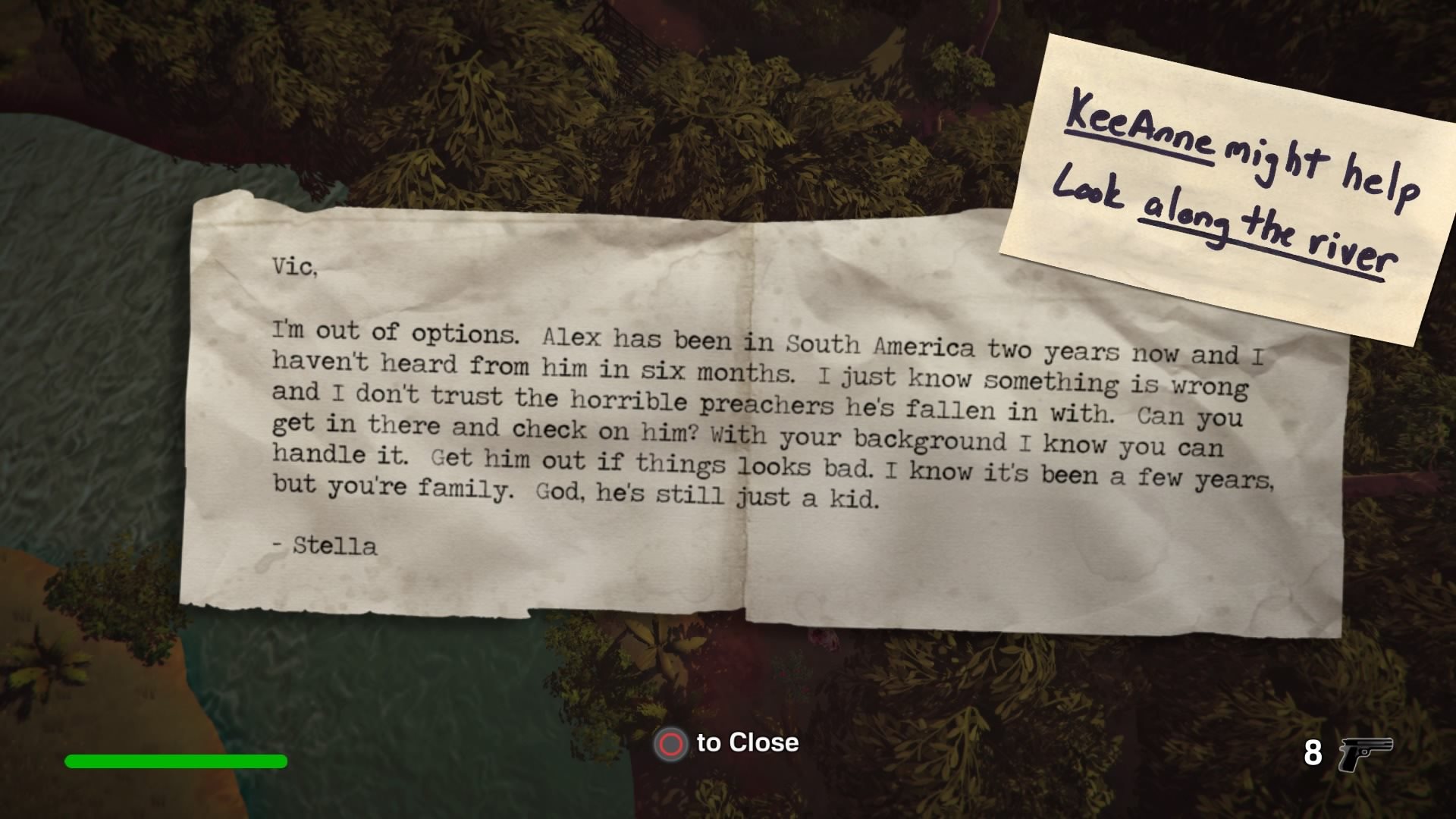
As Vic begins their journey into the jungle, voice over from their sister Stella explains Alex's predicament.
-
The Church in the Darkness 6

Freedom Town is split by a river that can make traversal difficult.
-
The Church in the Darkness 7
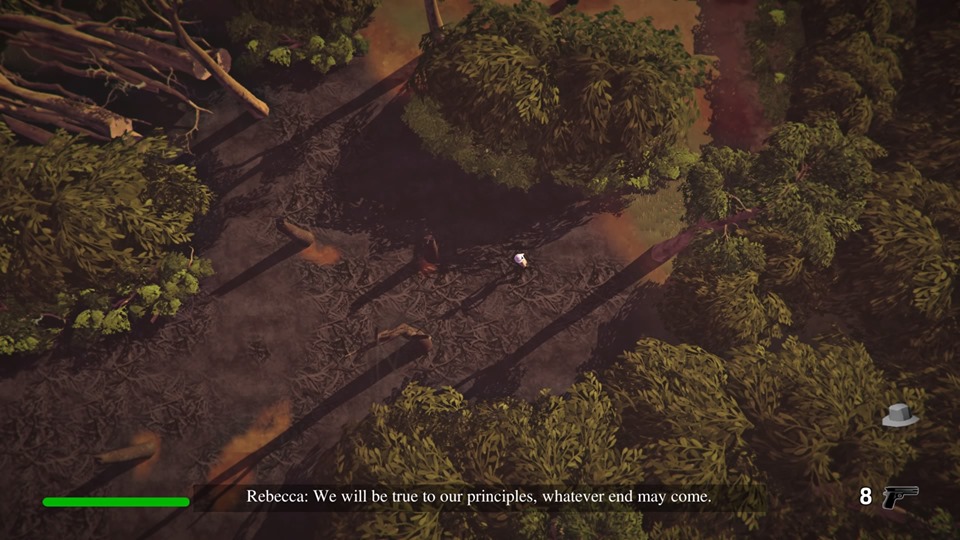
Isaac and Rebecca Walker preach their message to Freedom Town's residents constantly over loudspeakers.
-
The Church in the Darkness 8
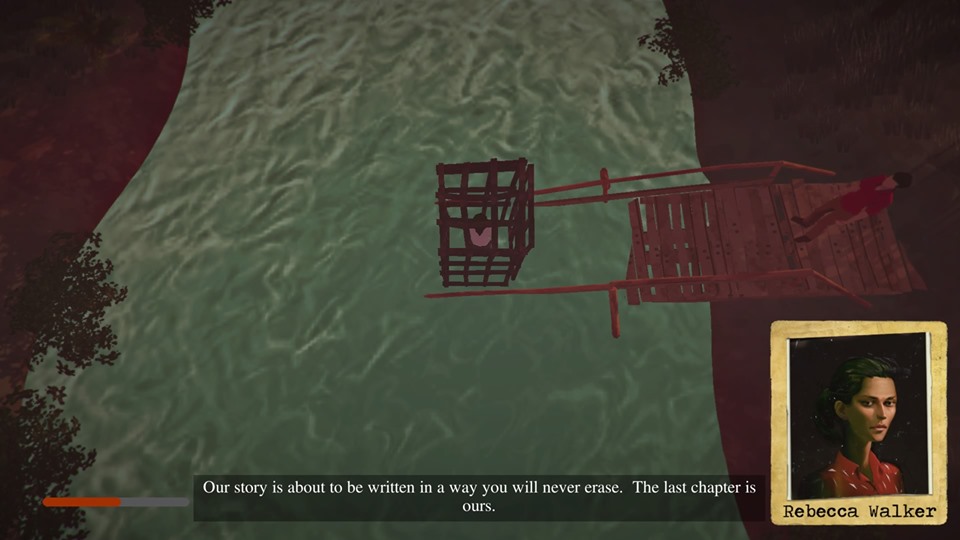
Vic, essentially, has three lives. They can be caught by Isaac and Rebecca and keep moving.
-
The Church in the Darkness 9
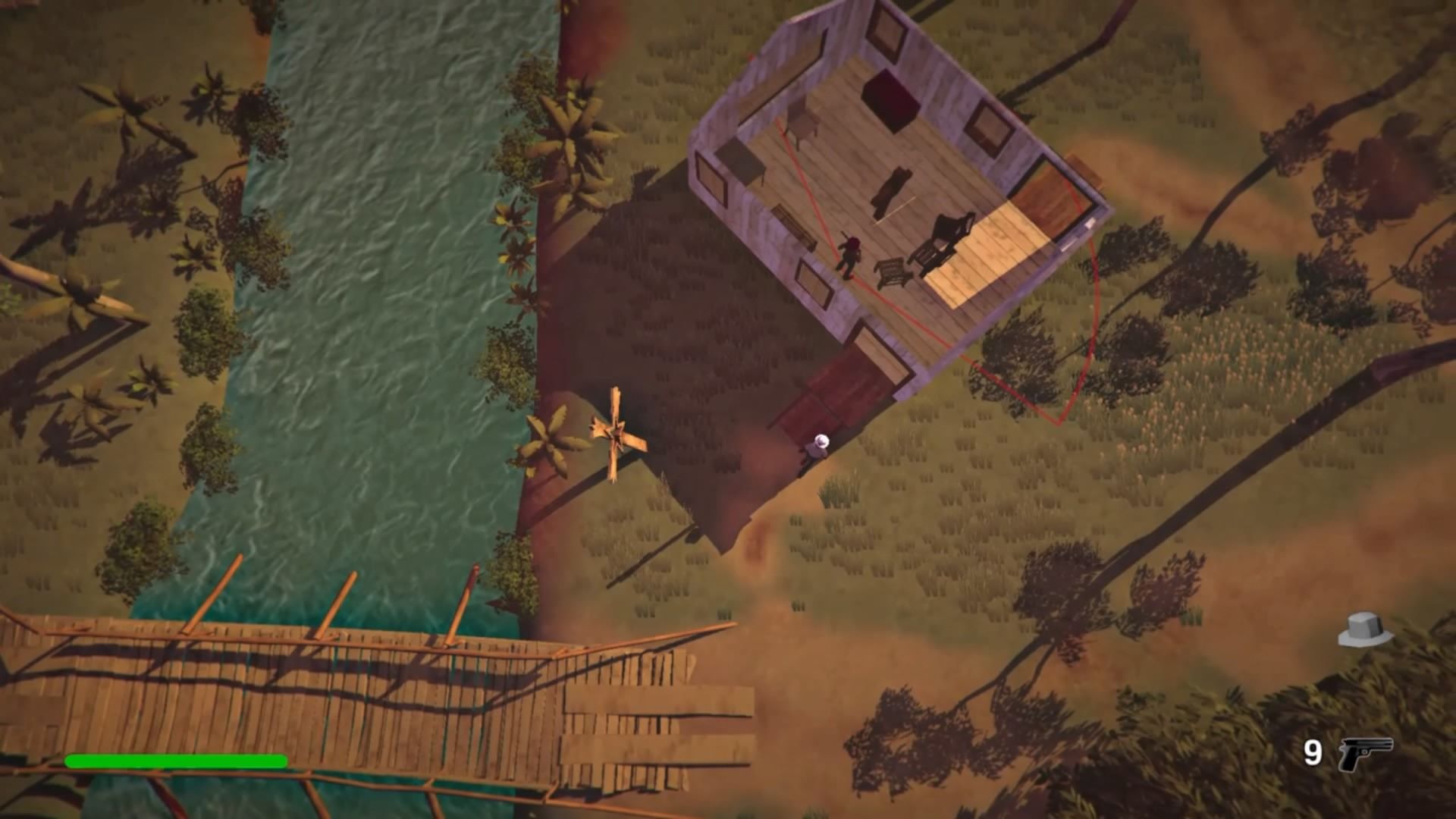
White chapels contain important information that will help Vic turn doubtful characters on the Collective Justice Mission.
-
The Church in the Darkness 10

Though the pulled back perspective difficult, it provides some pretty views on occasion.
